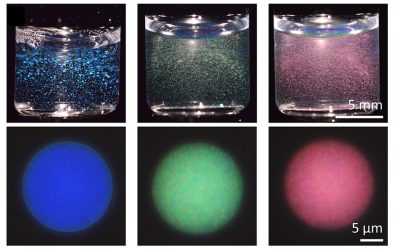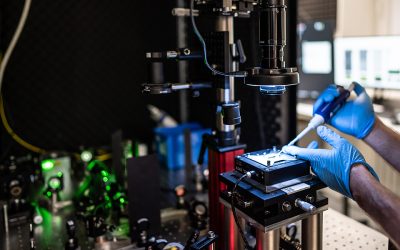The overuse of fossil fuels has caused a global energy crisis and environmental damage around the world. Designing and implementing novel energy strategies is the key to meet the growing demand for sustainable energy. Renewable energy sources such as solar energy have the potential to play an important role in worldwide energy demand. Additionally, the information and electronic devices are widely used in industrials, astronautic, environmental, medical and biological fields, making the world more efficient, intelligent and convenient. Many optoelectronic semiconductors with optimum electronic and optical properties have been designed (both theoretically and experimentally) and are widely implemented in solar energy conversion, information, and electronic devices.
In the past, commonly employed semiconductors such as Si, CdTe, GaAs, InGaN were mainly discovered by trial-and-error, which is inadequate and time-consuming with high cost in most cases. Contrary to this, computer simulation is an efficient paradigm shift for accelerated materials discovery and innovation. It offers useful guidelines for systematic or qualitative prediction of novel materials their properties and behavior before their synthesis or processing. Currently, by exploiting the power of high-performance computing systems (highly parallel supercomputers or graphical processing units-based systems), high-throughput (HT) computational methods allow material scientists to perform large-scale computer simulations at much faster rates. The computational outcomes provide useful direction for scientists to explore and develop new optoelectronic semiconducting materials with high performance. Moreover, the synthesizing space can be dramatically reduced by the pre-process high-throughput computational screening. Scientists can only synthesize a minority of high-performance candidates to get the novel real-world materials. Therefore, the experiment cost can be dramatically reduced.
In a recent review published in WIREs Computational Molecular Science, our research group at Jilin University provide detailed guidelines for HT computational screening and discovery of optoelectronic semiconductors. Stefano Curtarolo said that HT is the throughput of data that is way too high to be produced or analyzed by the researcher’s direct intervention and must therefore be performed automatically: HT implies an automatic flow from ideas to results. In the initial phase, the HT scheme based on first principles density functional theory (DFT) calculations identifies the initial target materials according to their geometries and compositions. Then, it performs thermodynamic stability, band gap, optical, and charge carrier screening calculations, successively. Finally, the potential candidates are identified by considering the toxicity, elemental abundance, and synthesis cost as the final filters. We also summarize the existing HT screening programs and material databases and highlight some recent advances of HT computational screening and discovery approaches in the field of optoelectronic semiconductors.
Using first principles DFT calculations, thousands of potentially unknown materials with remarkable properties can be discovered. One important feature of the virtual screening method is the formation of different material databases containing functional materials with novel chemical and physical properties, which can serve as valuable sources for data-driven materials design. This approach has been successfully applied in the discovery of photovoltaic solar absorbers, photoelectrochemical semiconductors, light-emitting diodes, and transparent conducting materials, which can be widely used in solar power conversion, lighting, imaging, detection, and more. Devices based on such applications, such as solar cells, light emitting diodes, smart windows, and photodetectors can help make the world more colorful, fascinating, and comfortable. Furthermore, large scale application of optoelectronic energy devices can efficiently alleviate the energy crisis and environmental degradation caused by conventional energy sources. Despite all these achievements, there are some problems that need to be addressed: large-scale DFT calculations are highly time-consuming, DFT is powerless both for larger systems and weakly interacting particles, and suitable selection criteria is quite hard to construct. In order to solve these problems, we suggest some perspectives and research directions with the aim of improving the performance of HT computational screening and discovery process.
We suggest that designing low-cost and accurate first principles DFT methods is a promising way to reduce the computational cost and accelerate materials screening. The establishment of large material databases containing optoelectronic semiconductors is another promising strategy to reduce the computational cost and processing time. Similarly, combining HT materials screening and discovery techniques with machine learning algorithms is also a powerful scheme to improve the performance of DFT. More design principles and chemical rules may be set for machine learning models, which may be helpful to understand the structure-property relationships and accelerate the development of optoelectronic semiconductors. Finally, strengthening experimental validation after HT computational screening and using the experimental outputs to improve the performance of HT theoretical algorithms is also a virtuous circle of novel materials designing and screening.
Kindly contributed by the authors.
Reference: S. Luo, et al. ‘High‐throughput computational materials screening and discovery of optoelectronic semiconductors‘, 2020, DOI: 10.1002/wcms.1489

















